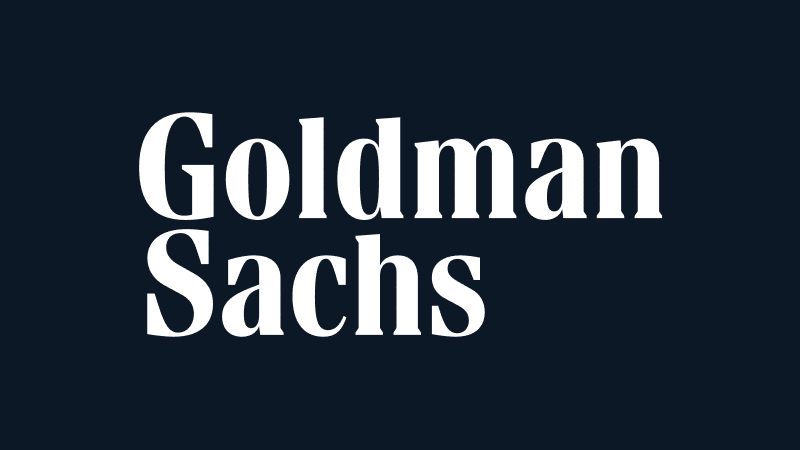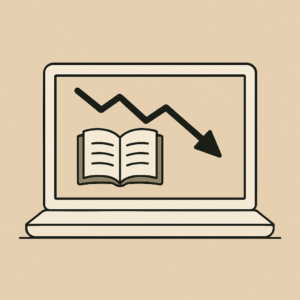In this article, we explore the Goldman Sachs Business Model to explain and understand how the Business Model of Goldman Sachs is structured and to learn about how Goldman Sachs makes money.
Goldman Sachs, a leading global investment banking, securities, and investment management firm, has a rich history spanning over 150 years. Founded in 1869 by Marcus Goldman, the company has transformed from a modest operation to a multinational powerhouse with a substantial influence on the world’s financial markets. This article will examine the business model of Goldman Sachs using Alexander Osterwalder’s Business Model Canvas as a framework. We will also delve into the company’s founding and the story behind its growth.
Background: Founding of Goldman Sachs
Goldman Sachs was founded by Marcus Goldman, a Bavarian immigrant who arrived in the United States in 1848. He began his career as a peddler and later became a merchant tailor in Philadelphia. In 1869, Goldman moved to New York City, where he started a brokerage firm, M. Goldman and Company, specializing in commercial paper.
Marcus Goldman’s vision was to provide short-term loans to businesses in need of capital. He sought out clients that other banks deemed too risky, offering them loans in exchange for their commercial paper (short-term debt). This innovative approach enabled Goldman to offer competitive interest rates and help businesses grow by providing access to much-needed capital.
The company underwent a significant change in 1882 when Goldman’s son-in-law, Samuel Sachs, joined the firm. The business was then renamed Goldman Sachs and focused on expanding its services, such as underwriting securities for emerging industries like railroad and utilities.
Over the years, Goldman Sachs continued to evolve, embracing new opportunities, and adapting to the changing financial landscape. Today, it is a global powerhouse with a diverse range of services that cater to a variety of clients, including corporations, governments, and high-net-worth individuals.
Goldman Sachs’ Business Model Canvas Analysis
- Customer Segments
Goldman Sachs serves a broad range of customer segments through its four main business divisions: Investment Banking, Global Markets, Asset Management, and Consumer & Wealth Management. The company’s customer segments include:
- Corporations: Goldman Sachs provides investment banking services, such as mergers and acquisitions, capital raising, and financial advisory services to large corporations.
- Governments: The company works with governments and their agencies, offering financial advisory services, underwriting, and risk management solutions.
- Institutional Investors: Goldman Sachs serves institutional investors, such as pension funds, insurance companies, and endowments, by offering various investment and trading services.
- High-Net-Worth Individuals: Through its Wealth Management division, the company provides financial planning, investment management, and private banking services to affluent clients.
- Retail Consumers: The Consumer division offers personal financial services, including savings accounts, loans, and credit cards, through its online platform, Marcus by Goldman Sachs.
- Value Propositions
Goldman Sachs offers a diverse range of value propositions to its clients, including:
- Expertise: The company’s long-standing history and reputation in the financial sector provide clients with access to a wealth of knowledge and experience.
- Comprehensive Financial Solutions: Goldman Sachs offers a wide array of products and services, enabling it to cater to the diverse needs of its clients.
- Global Presence: The firm operates in over 30 countries, providing clients with a vast network and access to international markets.
- Customized Services: The company tailors its services to meet the unique needs of its clients, ensuring a high level of satisfaction.
- Innovation: Goldman Sachs continuously invests in cutting-edge technology and embraces innovative solutions to stay ahead of the competition and better serve its clients.
- Channels
Goldman Sachs reaches its clients through various channels:
- Direct Sales: The company’s sales teams build and maintain relationships with clients, providing them with tailored financial solutions.
- Digital Platforms: Goldman Sachs leverages technology to offer online services, such as the Marcus by Goldman Sachs platform, which provides retail consumers with a user-friendly experience for managing their personal finances.
- Third-Party Distribution: The firm partners with other financial institutions and intermediaries, such as banks and broker-dealers, to distribute its products and services.
- Events and Conferences: Goldman Sachs participates in industry events and conferences, where it engages with clients, prospects, and other stakeholders.
- Marketing and Public Relations: The company utilizes various marketing and PR strategies to create brand awareness and promote its offerings.
- Customer Relationships
Goldman Sachs fosters strong customer relationships through the following means:
- Personalized Services: The company assigns relationship managers and dedicated teams to clients, ensuring that their specific needs are understood and met.
- Thought Leadership: Goldman Sachs publishes research reports, white papers, and market insights, providing clients with valuable information and guidance on the latest trends and developments in the financial sector.
- Customer Support: The firm offers comprehensive customer support, addressing clients’ queries and concerns promptly and efficiently.
- Education and Training: Goldman Sachs provides clients with access to educational resources and training programs, helping them make informed financial decisions.
- Revenue Streams
Goldman Sachs generates revenue from various sources, including:
- Fees: The company earns fees from providing advisory services, underwriting securities, and managing assets for clients.
- Interest Income: Goldman Sachs generates interest income from its lending activities, including corporate loans, mortgages, and consumer loans.
- Trading and Investments: The firm earns revenue from trading securities, derivatives, and commodities on behalf of clients, as well as from its proprietary investments.
- Commissions: The company receives commissions for facilitating transactions, such as stock trades and foreign exchange deals.
- Asset Management Fees: Goldman Sachs charges fees based on assets under management (AUM) for its investment management services.
- Key Resources
Goldman Sachs relies on several key resources to operate its business effectively:
- Human Capital: The firm’s talented workforce, including investment bankers, traders, analysts, and other financial professionals, is crucial to delivering high-quality services and generating revenue.
- Intellectual Property: Goldman Sachs owns a range of proprietary tools, algorithms, and trading strategies that give it a competitive edge in the market.
- Technology Infrastructure: The company invests heavily in technology, including data centers, software systems, and cybersecurity measures, to ensure the seamless operation of its business.
- Brand and Reputation: The firm’s strong brand and reputation in the financial industry enable it to attract and retain clients and partners.
- Financial Resources: Goldman Sachs has access to significant financial resources, allowing it to invest in growth opportunities and maintain a strong balance sheet.
- Key Activities
The key activities of Goldman Sachs include:
- Investment Banking: Providing advisory services, underwriting securities, and facilitating capital raising for clients.
- Trading and Investments: Trading securities, derivatives, and commodities on behalf of clients, as well as making proprietary investments.
- Asset Management: Managing assets for institutional and individual clients, offering a range of investment strategies and products.
- Consumer and Wealth Management: Providing financial planning, investment management, and private banking services to high-net-worth individuals, as well as personal financial services to retail consumers.
- Research and Analysis: Conducting research and analysis to inform clients and guide the company’s strategic decisions.
- Key Partnerships
Goldman Sachs maintains various key partnerships, including:
- Financial Institutions: The firm collaborates with banks, broker-dealers, and other financial institutions to distribute its products and services.
- Technology Providers: Goldman Sachs partners with technology companies to develop and implement innovative solutions, enhancing its offerings and operational efficiency.
- Regulatory Bodies: The company works closely with regulatory agencies to ensure compliance with financial regulations and industry standards.
- Educational Institutions: Goldman Sachs partners with universities and other educational institutions to support research initiatives, develop talent, and foster innovation in the financial sector.
- Non-Profit Organizations: The firm collaborates with non-profit organizations to promote social and environmental causes, as part of its corporate social responsibility efforts.
- Cost Structure
Goldman Sachs incurs various costs to operate its business, such as:
- Compensation and Benefits: The company’s largest expense is the compensation and benefits provided to its employees, including salaries, bonuses, and stock-based incentives.
- Technology and Infrastructure: Goldman Sachs invests heavily in technology infrastructure, software, and cybersecurity measures to maintain efficient operations and protect sensitive data.
- Occupancy and Facilities: The firm incurs costs related to the leasing and maintenance of its offices, data centers, and other facilities across the globe.
- Marketing and Business Development: The company spends on marketing and PR initiatives, as well as events and conferences, to promote its brand and offerings.
- Regulatory and Compliance: Goldman Sachs incurs costs related to regulatory compliance, including fees, audits, and legal expenses.
Goldman Sachs has come a long way since its founding in 1869 by Marcus Goldman. The firm has successfully navigated numerous challenges, adapting to the ever-changing financial landscape and embracing innovation. By examining Goldman Sachs’ business model using Alexander Osterwalder’s Business Model Canvas, we can better understand the key components that have contributed to the company’s enduring success.
The company’s diverse customer segments, comprehensive value propositions, and global presence have enabled it to remain a leading player in the financial industry. Goldman Sachs’ strong customer relationships, built on personalized services and thought leadership, have contributed to its ability to attract and retain clients. Its key resources, including human capital, intellectual property, and technology infrastructure, have allowed the company to maintain a competitive edge in the market.
Goldman Sachs’ key activities, such as investment banking, trading, and asset management, have driven its revenue streams, while its strategic partnerships have supported its growth and expansion. Although the firm faces significant costs related to compensation, technology, and compliance, its diversified revenue streams and efficient operations have allowed it to maintain profitability.
In an industry characterized by rapid change and increasing competition, Goldman Sachs’ ability to adapt, innovate, and deliver value to its clients will remain critical to its future success. By continuing to leverage its strengths and invest in its key resources and activities, Goldman Sachs is well-positioned to maintain its leadership position in the global financial market.
Did you know? Corporate teams like to use our coworking space in Bangalore.
Learn more about our coworking space on our YouTube channel Work Theater Studios where we talk about a variety of topics including personal finance, entrepreneurship, business and life.
Did you know? We also have a private theatre in Bangalore.




